#pig nosed softshell turtle
Explore tagged Tumblr posts
Text
The large compound island of New Guinea, and adjacent, tropical areas of Australia, are home to a remarkable turtle species, that is an outlier in at least four ways - its lack of close living relatives, its location, and its locomotion. This is the pig nosed or Fly River softshell turtle, also known as the pitted shell turtle, and Carettochelys insculpta. This curious freshwater turtle is now a common zoo exhibit, and occurs in the pet trade especially as cute juveniles, although it's size and cruising habit, make it problematic as a pet turtle. Fortunately care of C. insculpta is very well understood, and not problematic other than their requirement for living space.
C. insculpta is the only living Catettochelys species that is recognized. Very large individuals of this species reportedly have a carapace length of nearly 60 centimeters, or 24 inches. Yet more commonly they are around 25 centimeters, or 14 inches. In New Guinea this species is found only in the southern lowlands of the island, whereas in Australia it is found in Northern Territory. The exact distribution of C. insculpta is uncertain as regards both New Guinea and Australia, but the species is limited to the tropics.
The size of T. insculpta varies by geographical origin, with those from the Kikori area weighing 10 kilograms more than those from the Daly River. In spite of this, no morphological evidence has been presented to justify supposed subspecies distinctions. The great similarity between New Guinea and Northern Territory Carettochelys turtles, and their limited Australian distribution, indicate they dispersed to Australia from New Guinea at some time during the Quarternary.
Carettochelys are found in rivers and streams with soft bottoms and slow currents. Such habitats are rich in leaf litter and wood debris. They are also present in still water bodies in New Guinea. Hatchling Carettochelys can be found in New Guinea river deltas, but as adults they are migrated upstream. Australian populations do not frequent estuaries at all, and are thus more strictly freshwater. These Australian Catettochelys have more habitat available in the wet season, when they are able to move into nearby creeks, and exploit flooded floodplain environments.
Oftentimes people object that Caretrochelys are not true softshells, on the grounds that they are not members of the trionychid clade, that is named for Trionyx, an African softshell turtle. But Catettochelys is their definite sister, and together with the trionychids, they comprise the clade Trionychia. The first trionychians were already softshells, and the morphological status as softshell is inherited by both Carettochelys and its trionychid sisters.
The presence of a northern type turtle, like Catettochelys, in the Australasian realm is a bit of an enigma. Although there are no longer native carettochelyids in the northern hemisphere today, ancestral carettochelyids during the Eocene epoch, appear to have exclusively inhabited northern continents. Therefore ancestral Catettochelys must have reached island Australasia prior to their extinction in Asia. It is not known when carettochelyids arrived in Australasia, and there is currently only one species.
Some other New Guinea turtles, that are members of the trionychid group, are also of Asian affinities. All other Quarternary turtles in New Guinea and Australia, are either pleurodires or meiolaniids. Both these clades are descended from ancestors that were present since the breakup of Gondwana in the Cretaceous and Early Palaeogene. Northern type turtles in Australasia are much more recent arrivals in Australasia, and they are limited to the northern continental mainlands.
Australia has a well deserved reputation for her unique animal life, having evolved in isolation from those of their inhabited continents. However her isolation has not been total, and as she has been carried north towards Asia by forces below the earth's shallow crust, new kinds of animals have arrived on her shores from Asia, including murid rodents, and agamid and varanid lizards.
Although the biota and ecology of Australasia is distinct from that of Asia today, there is overlap between the animal and plant life of these continents, despite the lack of land connections between the continental masses of 'Sundaland' and 'Sahulland'. In fact the climate is an effective barrier, with drier and more season climates in eastern Indonesia, working with the sea to separate the rainforests on the Sunda shelf from those on New Guinea.
Climate zones within Australia largely limit New Guinean faunal and floral components, which include more Asiatic elements than those of Australia, to the north of Australia. The fauna and flora of which, cannot easily be demarcated apart from those of southern New Guinea. Indeed two land bridges across the present Torres Strait, had connected the island continents during the Pleistocene, during which time the sea levels were lower, allowing migration between what are now discontinuous land masses.
Although Catettochelys is unrelated to Holocene sea turtles, it swims with an unusual motion intermediate between the fore and aft rowing of typical, plesiopodal freshwater turtles, such as the red eared slider, and hydropodal sea turtles that swim by employing vertical strokes, or underwater flight. Like the sea turtles, Catettochelys makes more use of its deltoideus muscle in its swimming stroke, creating better forces of lift that facilitate pelagic abilities.
These turtles are quite catholic omnivores, consuming both plant and animal food resources, but their feeding habits become increasingly vegetarian as they mature. They feed extensively on tropical fruits such as Ficus, Sonneratia, and Nypa, that fall into the water where Carettochelys feed, and they also consume a broader diversity of waterside and aquatic plant material, such as the eelgrass Valisneria and algae.
Their aquarium diet should therefore include algae wafers and fresh fruits and vegetables, such as banana, melon, and lettuce. Dried preparations can be fed to these turtles, but it is much preferable to choose those with a rather low protein content. Usually they prefer to eat at the bottom so sinking pellets are a better choice than floating sticks. They will also readily eat defrosted and fresh meaty items. Respecting their omnivory, their diet should be varied and its vegetable component should make up about 2/3 of the diet of adult Carettochelys.
The animal prey that are consumed by Carettochelys are benthic and slow moving, including snails and crayfishes. Therefore these turtles are not suited for sharing an environment with hard shelled potential prey. They are also likely also to consume some aquarium plants. Vertebrates are said only to be eaten as carrion, but opportunistic predation on small, slow or sleeping fish cannot be excluded, because this is normal benthivorous turtle behavior.
Although they are active and efficient midwater swimmers, Carettochelys are foragers and not hunters. Fishes that are significantly larger than their heads will be safe. This species is also peaceable towards other turtles, and is often housed in zoos alongside Australasian pleurodires, of the genera Chelodina, Elseya, and Emydura. Indeed Catettochelys is by now a very popular species in mixed species exhibits, having a good tolerance of other animals, and being much easier to accommodate than are marine turtles.
Im spite of this overall good tolerance, Carettochelys males can actually be aggressive to one another, and in horny condition can harass females with tail biting behavior. Rarely males can be aggressive towards other turtle species, and even fish sharing their environment, but this is a statistical tail end effect, and cannot be considered typical. Usually it is sufficient not to cohabit two males together.
The morphology of the Catettochelys humerus is most similar to that of the trionychids, yet it's shape is convergent upon that of sea turtles. Overall the forelimbs are more efficient hydrofoils than is normal for a freshwater turtle, although they still walk and swim using an alternate coordination of all four limbs, despite being well capable of a graceful, penguin-like underwater flight using the forelimbs alone.
Compared to the trionychid sister clade, Catettochelys possesses elongated autopodia, making the forelimb a functioning underwater 'wing'. This elongation is already described in the extinct, northern hemisphere carettochelyids, but it is thought to be unique among all of the non-marine turtles. The swimming style of Carettochelys gives it an advantage when competing against pleurodire turtles, because it is useful for finding food in low energy environments. The mystery is why no turtles swim like this today, in the tropical rivers of the Congo, Amazonia, or Southeast Asia.
Catettochelys even possesses salt glands, but they are degenerated, like those of the gharial Gavialis, a riverine crocodilian descended from marine ancestors. However it is not resident in brackish environments as an adult, and should be regarded as a truly freshwater turtle. This species visits estuaries only to nest on sandbanks, before returning upstream as they grow. Some Carettochelys juveniles reside in brackish water with salinities up to 21 ppt, or a specific gravity of 1.015.
Often animals and plants that outlive their relatives, in the sense of the geological timescale, have shifted to novel environments. Like the gharial, and the South Asian, Chinese, and Amazon river 'dolphins', of middle Cenozoic origins, Carettochelys appears to represent the phenomenon of atypical, freshwater subclades surviving longer that their marine cousins.
Depending on the location and the time of the year, Carettochelys in the wild may experience an approximate spectrum of pH from 6.5 to 8.5, although the average pH in the river channels is surely 7 to 8. During the wet months, when Catettochelys make use of flooding to access the floodplain, the water pH is lower, despite the strange but widely circulated claim online, that Catettochelys requires hard, alkaline water parameters.
The water temperature in river channel environments is in the middle and upper 20s degrees centigrade. In floodplain habitats the temperature may seasonally reach the upper 30s. If they are maintained at brackish salinities, which is not necessary, the specific gravity should not reach 1.02, and they will still need to drink freshwater, as do marine snakes and birds with functioning salt glands, that still drink rainwater.
#Carettochelys insculpta#pig nosed softshell turtle#pig nosed turtle#Fly River softshell turtle#Fly River turtle#pitted shell turtle#aquatic reptiles#aquatic turtles#tankbusters#freshwater turtles
0 notes
Note
That pig nosed turtle looks so happy!
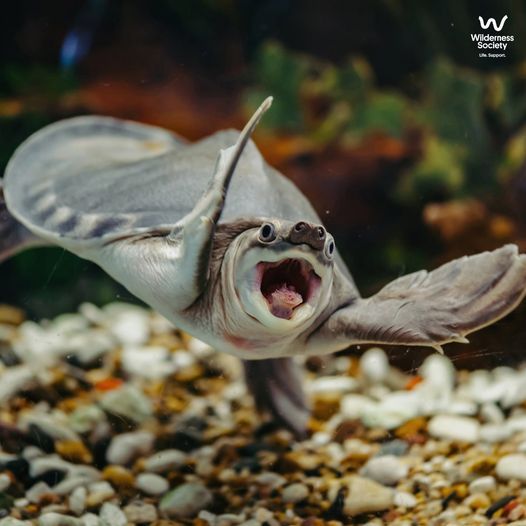

Pig-nosed Turtle (Carettochelys insculpta), juvenile, family Carettochelyidae, found in northern Australia and southern New Guinea
ENDANGERED.
These turtles have no scales, and thus have a leathery shell. Its shell is made of bone, however, unlike “softshell turtles” in the family Trionychidae.
photographs by daniilphotos
#pig nosed turtle#carettochelys#carettochelyidae#softshell turtle#turtle#reptile#herpetology#animals#nature#australia#new guinea
3K notes
·
View notes
Text
Round 3 - Reptilia - Testudines

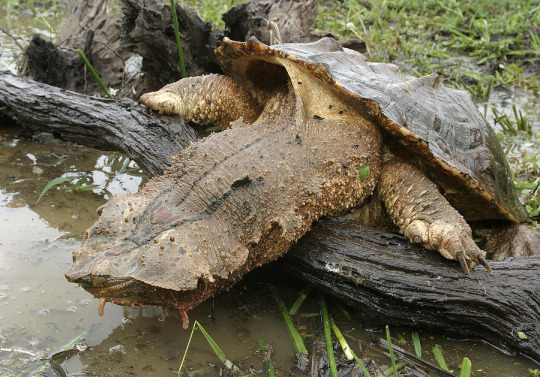

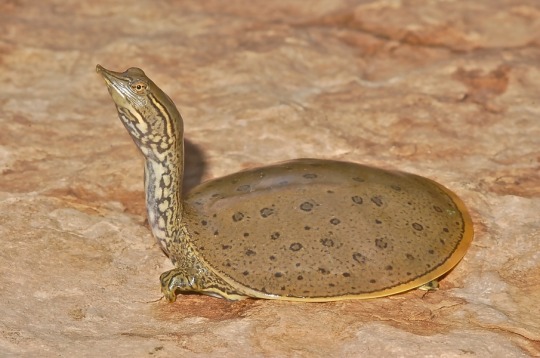
(Sources - 1, 2, 3, 4)
Testudines, commonly known as “turtles”, are a unique order of reptiles. They are divided into two major clades: Pleurodira (“side-necked turtles”) and Cryptodira (“hidden-neck turtles”), which differ in the way their head retracts. The are composed of the living families Chelidae (Austro-South American side-neck turtles), Pelomedusidae (African side-necked turtles), Podocnemididae (“big-headed turtles” and South American side-necked river turtles), Chelydridae (“snapping turtles”), Dermatemydidae (“Hickatee”), Kinosternidae (“mud turtles” and “musk turtles”), Cheloniidae (“sea turtles”), Dermochelyidae (“Leatherback Sea Turtle”), Platysternidae (“Big-headed Turtle”), Emydidae (“terrapins”), Geoemydidae (Eurasian pond and river turtles and Neotropical wood turtles), Testudinidae (“tortoises”), Carettochelyidae (“Pig-nosed Turtle”), and Trionychidae (“softshell turtles”).
Turtles are most known for their modified, fused ribs that form an armored carapace. They also have a flattened belly-plate called a plastron. Their shell is mostly bone, covered by keratin scales called scutes. They shed their scutes as they grow, with older scutes peeling off of the newer, larger scutes beneath. As defense, Pleurodirans draw their necks sideways, hiding their head under the overhang of their carapace. Meanwhile, most Cryptodirans can fold their entire neck inside their shell. Box Turtles (genera Cuora and Terrapene) also possess a hinged plastron which allows them to seal themselves tightly within their own skeleton. Due to their streamlined bodies, sea turtles (superfamily Chelonioidea) cannot retract their head and limbs into their shells for protection. Turtles are found in many environments, on most continents, some islands, and most of the ocean. Some are terrestrial, some are freshwater, and some are marine. Some are herbivores, most are omnivores, and some are pure carnivores.
All turtles lay eggs. They do not form pair-bonds or social groups, and have a wide range of mating behaviors. In terrestrial species, males are often larger than females, and will fight with each other for the right to mate. For most semi-aquatic species, combat happens less often, and males will pursue females. In fully aquatic species, males are often smaller than females and rely on courtship displays to gain mating access. All turtles lay their eggs on land, although some lay eggs near water that rises and falls in level, submerging the eggs and signaling them to hatch. Most turtles create a nest for their eggs, digging a chamber into the ground. Depending on the species, the number of eggs laid varies from one to over 100. Eggs can be hard or soft-shelled. Most mother turtles do not perform parental care other than covering their eggs and immediately leaving, though some species guard their nests for days or weeks. Most species have their sex determined by temperature. In other species, sex is determined genetically. Hatching young turtles break out of the shell using an egg tooth, a sharp projection that exists temporarily on their upper beak. Hatchlings dig themselves out of the nest and find safety in vegetation or water. Most species grow quickly during their early years and slow down when they mature.
Testudines are not closely related to the two major living clades of Reptilia, Lepidosauria and Archosauria, so their exact place on the reptile tree has historically been disputed. The most recent evidence points to them being closer related to archosaurs than to lepidosaurs, but their ancestors are estimated to have split 255 million years ago during the Permian. The oldest known members of the Pleurodira lineage are the Platychelyidae, from the Late Jurassic. The oldest known unambiguous Cryptodire is Sinaspideretes, a close relative of softshell turtles, from the Late Jurassic of China. Turtles began to diversify during the Cretaceous.

Propaganda under the cut:
The largest living species of turtle is the Leatherback Sea Turtle (Dermochelys coriacea), which can reach over 2.7 m (8ft 10in) in length and weigh over 500 kg (1,100 lb).
A turtle was the symbol of the Ancient Mesopotamian god Enki from the 3rd millennium BC onward.
If a female sea turtle does not want to mate, she has multiple ways of refusing a male’s advances. Her larger size and strength may allow her to simply swim away faster, or she may bite the male. She may take up a refusal position with her body vertical, her limbs widely outspread, and her plastron facing the male, keeping her rear away from him. If water is too shallow for the refusal position, the female may resort to beaching herself, as males are not adapted to come ashore.
In Hindu mythology, the World Turtle, named Kurma or Kacchapa, supports four elephants on his back; they, in turn, carry the weight of the whole world on their backs. The turtle is one of the ten avatars or incarnations of the god Vishnu.
There is experimental evidence that the embryos of Chinese Pond Turtles (Mauremys reevesii) can move around inside their eggs to select the best temperature for development, thus choosing their sex.
The Yangtze Giant Softshell Turtle (Rafetus swinhoei) is one of the most endangered animals in the world, considered to be functionally extinct. The species has a known population of only 1 in captivity and potentially 1 in the wild, with no remaining fertile females. Conservation teams continue to monitor lakes and ponds in China and Vietnam and interview local communities to gather more information about potential surviving individuals. Efforts are also underway to explore new areas of habitat that could support this species.
An ancient Greek myth told that only the tortoise refused the invitation of the gods Zeus and Hera to their wedding, as it preferred to stay at home. Zeus then ordered it to carry its house with it forever. Not the worst Zeus curse by far, tbh.
The oldest known living turtle, and land animal, is said to be a Seychelles Giant Tortoise (Aldabrachelys gigantea hololissa) named Jonathan, who is estimated to be 192 as of 2025. He lives on the grounds of Plantation House, the official residence of the governor of Saint Helena and is cared for by the government. The Saint Helena five-pence coin depicts Jonathan on one side.
Among vertebrate orders, turtles are second only to primates in the percentage of threatened species. They face many threats, including habitat destruction, hunting, the pet trade, pollution, light pollution, and climate change.
Chinese markets have sought to satisfy an increasing demand for turtle meat with farmed turtles, even turning to American markets to cover their decreasing supply, as harvesting wild turtles is legal in some American states.
Threatened species of turtles, such as the critically endangered Radiated Tortoise (Astrochelys radiata), Angonoka Tortoise (Astrochelys yniphora), Philippine Forest Turtle (Siebenrockiella leytensis), Yellow-headed Box Turtle (Cuora aurocapitata), Indochinese Box Turtle (Cuora galbinifrons), Golden Coin Turtle (Cuora trifasciata), McCord's Box Turtle (Cuora mccordi), and the Roti Island Snake-necked Turtle (Chelodina mccordi) are in high demand in the exotic pet trade, and their populations have plummeted as poachers capture them from the wild.
Large numbers of sea turtles are accidentally killed in longlines, gillnets, and trawling nets as bycatch, or struck by boats. In Australia, Queensland's shark culling program, which uses shark nets and drum lines, has killed over 5,000 turtles as bycatch between 1962 and 2015, including 752 critically endangered ones. Light pollution at night threatens young sea turtles who use the moon to guide them toward the ocean, instead crawling into brightly-lit city streets where they are struck by cars or fall into storm drains.
Native turtle populations can also be threatened by invasive ones. The central North American Red-eared Slider (Trachemys scripta elegans), often kept as pets and then released into the wild, has been listed among the "world's worst invasive species", outcompeting native turtle species in eastern and western North America, Europe, and Japan.
As of 2021, turtle extinction is progressing much faster than during the Cretaceous-Tertiary extinction. At this rate, all turtles could be extinct in a few centuries.
#animal polls#round 3#reptilia#testudines#I had to see a panic attack inducing gif in the top results when I searched for snapping turtle gifs so don’t look that up#for the record there is absolutely no reason to feed live rodents to turtles other than shock value and a desire to be cruel#just throwing that out there
120 notes
·
View notes
Text
Have you heard of this animal or seen its picture before?
A "rare Animal" Quiz based on This Bored Panda Article.
no- 0 | maybe- 1 | yes- 2 | Bonus; who hasn't?- 3points |
61 questions, grade out of 122pts (yes is the correct answer, "who hasn't" is bonus points)
my score: 94/122 (77%), 99/122 (81%) with bonus pts. Definitely heard of 42 and possibly heard of another 10. my answers below the cut bc its long af.
Venezuelan Poodle Moth; yes- 2pts
Glaucus Atlanticus [Blue Dragon, Blue Glaucus]; 2
Dumbo Octopus; 2
Macropinna Microstoma [Pacific barreleye fish]; 2
Irrawaddy Dolphin; no- 0
Lowland Streaked Tenrec; maybe- 1
Red-Lipped Batfish; 0
Sunda Colugo; 2
Blue Parrotfish; 2
Glass Frog; 2
Fossa; 2
Panda Ant; 2
Tufted Deer; 1
Honduran White Bat; 2
Japanese Spider Crab; 2
Saiga Antelope; 2
Spiny Bush Viper; 1
Leafy Seadragon; who hasn't?- 3
Atretochoana Eiselti Or 'Penis Snake'; 0
Dik-Dik; 2
Lilac-Breasted Roller; 0
Mata Mata; 1
Sea Pig; 0
Superb Bird-of-Paradise; 2
Satanic Leaf-Tailed Gecko; 2
Halitrephes Jelly; 0
Pink Fairy Armadillo; 2
Okapi; 2
Maned Wolf; 2
Star Nosed Mole; 2
Blobfish; 3
Pacu; 1
Golden Tortoise Beetle; 2
Gobi Jerboa; 2
Sea Pen; 1
Axolotl; 3
Narwhal; 3
Mantis Shrimp; 2
Shoebill; 2
Patagonian Mara; 2
Goblin Shark; 2
Hummingbird Hawk-Moth; 2
Yeti Crab; 2
Sri Lanka Frogmouth; 1.5 (know of frogmouth's but not sri lankan specifically)
Long-Watted Umbrellabird; 1
Dugong; 2
Giant Isopod; 2
Aye-Aye; 2
Cantor's Giant Softshell Turtle; 1
Silkie Chicken; 1
Gerenuk; 2
Buff-Tip Moth; 0
Snub-Nosed Monkey; 2
Aardvark; 3
Naked Mole Rat; 2.5
Indian Purple Frog; 0
Thorny Devil; 2
Babirusa; 2
Sea Lamprey; 2
Umbona Spinosa [treehopper/thornbug]; 0
Warty Frogfish; 1
3 notes
·
View notes
Text
Turtle (pt 2)
Mexican Musk Turtle


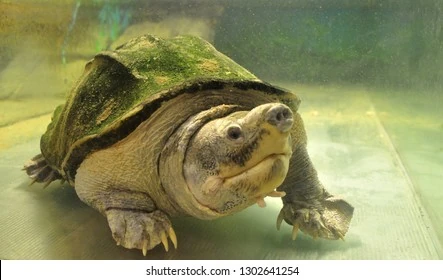
That is very cute.
Narrow Bridged Musk Turtle




Also very cute.
Pig Nosed Turtle


Asian Giant Softshell Turtle



That is honestly such a vibe.
Florida Softshell Turtle



Indian Narrow-Headed Softshell Turtle



Alligator Snapping Turtle

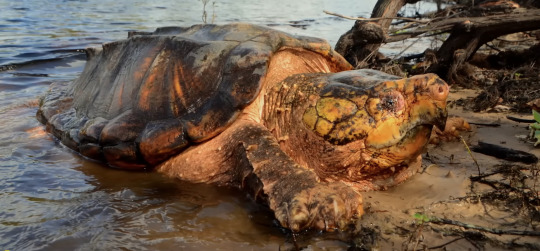

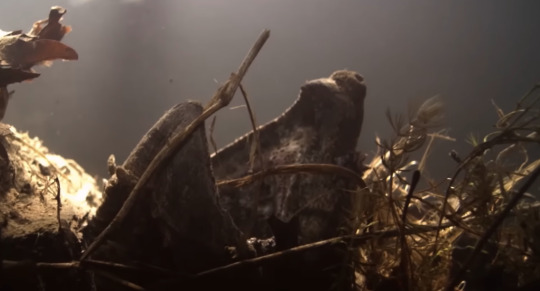
This species is cool since it has a thing on its tongue looks like a worm and it uses it to catch food.


0 notes
Text
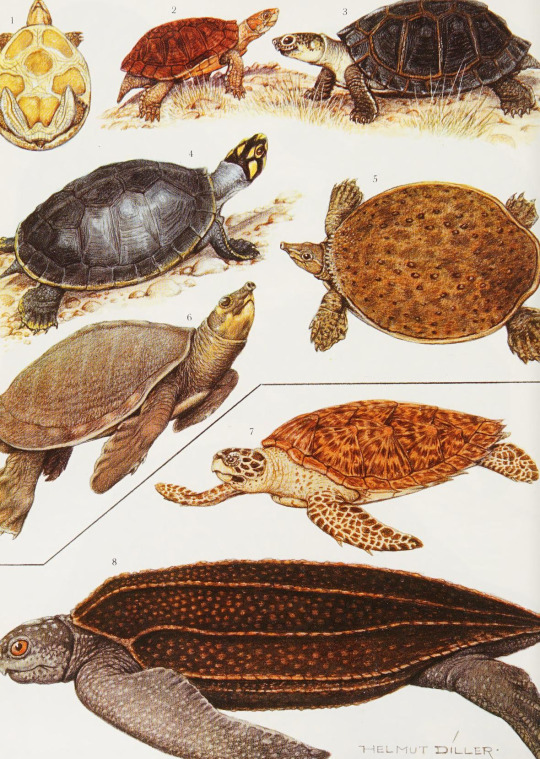
Grzimek's Animal Life Encyclopedia. Volume 6: Reptiles. Written by Bernard Grzimek. 1984. Illustration by Helmut Diller.
1.) Indian flapshell turtle (Lissemys punctata)
2.) Marsh terrapin (Pelomedusa subrufa)
3.) Pan terrapin (Pelusios subniger)
4.) Yellow-spotted river turtle (Podocnemis unifilis)
5.) Spiny softshell turtle (Apalone spinifera)
6.) Pig-nosed turtle (Carettochelys insculpta)
7.) Hawksbill sea turtle (Eretmochelys imbricata)
8.) Leatherback sea turtle (Dermochelys coriacea)
#reptiles#turtles#Indian flapshell turtle#Marsh terrapin#Pan terrapin#Yellow-spotted river turtle#Spiny softshell turtle#Pig-nosed turtle#Hawksbill sea turtle#Leatherback sea turtle#Helmut Diller
215 notes
·
View notes
Text

That's it. Twitter has gone too far
#Turtle#Softshell turtle#Freshwater#Giant turtle#Reptile#reptiblr#Herps#Shitpost#Pig nosed turtle#Birthday#Funzo#tortoise#Terrapin#terrapin station
20 notes
·
View notes
Text
Pig-Nosed Turtle Time? Pig-Nosed Turtle Time!
Winner of Most Boopable Turt Snoot Since Ever, the pig-nose turtle! Also known as the Fly River turtle or the pitted-shell turtle!

Only living member of the family Carettochelyidae! Very close to softshell turtles, but not quite!

Native to Australia and New Guinea! Friend from Down Under!

Unless you mess with home territory, then... grump!

Very mysterious sometimes, needs research, but we do know some things! Like they sometimes gather around hydrothermal vents in the cooler seasons!

Also, they can grow to be 50 pounds and more than 22 inches long! So very shaped!

Snoot is a powerful sensory organ! Helps this friend hunt when the water gets too murky!

Very flexible eater! Can eat fish, figs, crustaceans, seeds, even carrion!
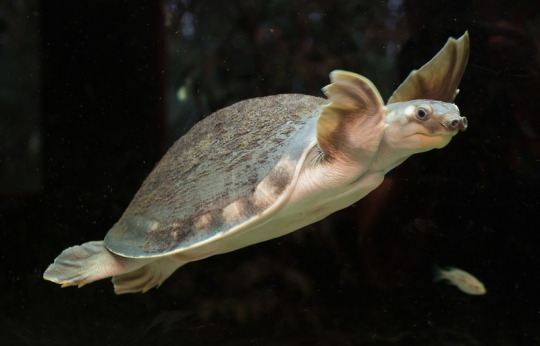
Has very small range, and is in decline in some places in Australia! People don't like when they eat bait, but others like them for pets, both kinds of people lower the population of a vulnerable turt!

Happy to still have turt friend around! Please support turtle conservation!
1K notes
·
View notes
Text
THE COMPETITORS
After hours of filtering, I have a list! From 411 submisstions to 134 competitors. Of course, that means that not all the submissions are competing. My main rule for filtering was that when many similar animals were submitted, one was selected. This means that even if your submission din't get in, there is likely somthing else similar you can vote for instead! I'm hoping to get the polls out this Saturday or Sunday, and I'll post the time once it's decided. That being said... here's the list!
Mouse deer
Blanket octopus
Twenty plume moth
Anomalocaris
Caecilian
Bagworm moth caterpillars
Balaenognathus
Banded archerfish
Barnacle
Barreleye fish
Tripod fish
Bigfin squid
Bilby
Black sea hare
Black snub nosed monkey
Blobfish
Blue sea dragon
Nano-chameleon
Bush brown caterpillar
Chinese water deer
Maned wolf
Colugo
Common spotted cuscus
Corpse Assassin Bug
Messmate pipefish
Cotylorhynchus
creatonotos gangis
Tongue eating louse
Ganges river dolphin
ghost pipefish
Giant Anteater
Giant gippsland earthworm
Giant tube worm
Giraffe Weevil
Glowworms
Goblin shark
Golden mole
Green-banded broodsac
Greenland shark
Gum leaf skeletonizer caterpillars
Hagfish
Hallucigenia
Hammer head bat
Helicoprion
Honduran white bat
Short horned lizard
Green hydra
Jerboa
Jerusalem cricket
Lamprey
Largetooth sawfish
Bulwer’s pheasant
Lowland Streaked Tenrec
Lyrebird
Marbled polecat
Mata mata
Mexican mole lizard
Ghost faced bat
Mudskipper
Muntjac
Naked bulldog bat
Naked mole rat
Phillipene tube nosed fruit bat
Oarfish
Mantis shrimp
Ogre faced spider
Okapi
platypus
Pangolin
Parrot fish
Partridge bug
Pelican eel
Asian giant softshell turtle
Pink fairy armadillo
Pipa pipa
Platybelodon
Portuguese Man O War
Potoos
Predatory tunicate
Pufferfish
Sea spider
Red lipped batfish
Bowmouth guitarfish
Roseate spoonbill
Pink iguana
Royal albatross
Sage grouse
Saiga antelope
Sailfin dragon
Volcano snail
Schaefer’s anglerfish
Sea cucumber
Sea pig
Sea sheep
Sharovipteryx
Echidna
Assassin spider
Spider tailed viper
Siphonophore
Solenodon
Spectral bat
Spix’s disc winged bat
Spotted wobbegong
Stalk-eyed fly
Stoplight loosejaw
Giant phantom jelly
Sunfish
Sword billed hummingbird
Tailless whip scorpion
Tapir
Tardigrade
Tarsier
Telescopefish
Woodcock
Aye-aye
Bobbit worm
Nautilus
Glass frog
Immortal jellyfish
Olm
Mirror spider
Trilobite Beetle
Trumpetfish
Vampire bat
Vampire squid
Velvetworm
Wonderfish
Wrinkle-faced bat
97 notes
·
View notes
Text

half the reason im even posting this is bc i wanna be able to accsess it from my phone too. also ive been quiet here
anyway, another rottmnt oc, this is wilbur. right now all i got is something something pet trade something something oozquito oopsie. like the boys, they were a turtle originally, unlike the boys they are much less human. i saw that these turtles were a thing, that they had a cute nose, and more so that they had soft shells and knew i had to make one. i wanted to make a sort of compliment to donnie (someone who isnt scared of their softshell because they werent raised to see it as a disadvantage, just a different biological trait) as well as a friend for mikey because i tend to ignore him.
ALSO also i got excited because i was tryna think of an obligatory scarf color and realized i could actually do green this time because pig nosed turtles are brown and white :)
#i like them a whole awful lot#art#doodles#concept art#oc#rottmnt oc#Wilbur#idk a last name rn. if they get one
8 notes
·
View notes
Text
Making Raph a tortoise because why not, why not make him a vegetarian with stompy feet?
I kinda like the idea of Donnie being a softshell because I like to think that he tends to be weaker than his brothers but like just kinda physically ? Or maybe even an albino softshell? Or maybe one with a condition like the heart out of its chest?
Making Mikey a yellow-blotched map turtle.
Hesitating between pig-nosed turtle and mata mata turtle for Leo.
Making Splinter a Capybara bc 1) why the fuck not and 2) no racism
Keeping April as black because well, it's already here, huh
Making Casey native american bc WHY THE FUCK NOT
3 notes
·
View notes
Note
I really like your TMNT art and how they're each a different type of turtle. From my very limited knowledge of turtles, I think R is a snapping turtle and L is a painted turtle. What type did you make D and M?
Thank you! I borrowed from ROTTMNT because they made them different species and I thought it was a really good idea so I just followed that. (I've only watched a little of the show, but I do like the designs a lot.)
You're right, Raph is a snapping turtle! An alligator snapping turtle specifically. I like their spikes. I like that they're just tanks.

Leo is a red-eared slider, which is what they were all meant to be originally apparently. (I would never in a million years have guessed they were based off anything found in the natural world.)

Donny is a spiny softshell which is cute because it gives him little shell freckles, but I borrowed from the pig-nose turtle (which I think is...not a softshell?) for the face because, scientifically speaking, they're more owo .


In Rise, Mikey is specifically an ornate box turtle but I picked an Eastern box turtle because I liked their shell patterns better. They both have freckles though, this is very important.

In short, I learned more about turtles than I ever knew before just to make some silly fan comics. Always trick yourself into an education.
315 notes
·
View notes
Note
trick or treat!!
Happy Halloween!
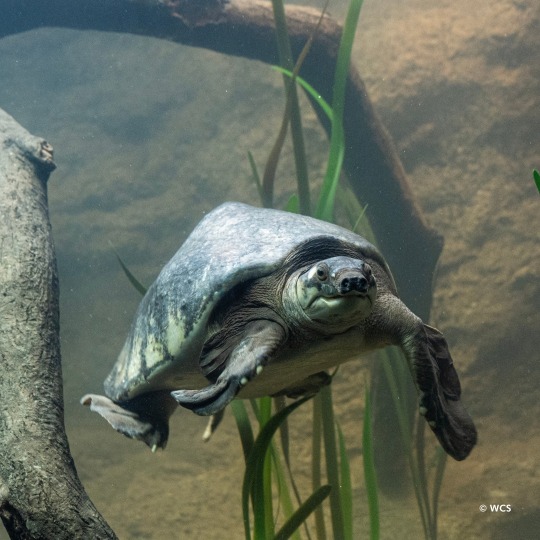

Pig-nosed Turtle (Carettochelys insculpta), family Carettochelyidae, found in northern Australia and southern New Guinea
ENDANGERED.
These turtles have no scales, and thus have a leathery shell. Its shell is made of bone, however, unlike “softshell turtles” in the family Trionychidae.
photograph by Wildlife Conservation Society - Bronx Zoo
782 notes
·
View notes
Video
instagram
Credit to @animalcubss : WHAT A CHARACTER 😂🐢🐢🐢🐢⠀ The pig-like nose acts as a snorkel that they use to breathe in water, and to find their food.⠀ The Burmese Peacock Softshell is a very rare species of Turtle endemic to Myanmar. #AmazingNature #SpeakForAnimals #HighlyEndangered ⠀ .⠀ .⠀ .⠀ 📽 @zoowroclaw⠀ .⠀ .⠀ .⠀ .⠀ .⠀ 🔝 #photogram #instagood #photooftheday #photoeveryday #instafamous 🔝 #amazing #style #100likes #nofilter #bestoftheday 🔝 #funny #baby #webstagram #followback #foodporn ⠀ #love⠀ ⠀ ⠀ #tortoiselover #tortoiseshell #russiantortoise #leopardtortoise #tortoise #tortoises #wildplanet #wilderness #wild #wildlife #wildgeography https://www.instagram.com/p/CANW9j6nPoP/?igshid=1pn945hibzkza
#amazingnature#speakforanimals#highlyendangered#photogram#instagood#photooftheday#photoeveryday#instafamous#amazing#style#100likes#nofilter#bestoftheday#funny#baby#webstagram#followback#foodporn#love#tortoiselover#tortoiseshell#russiantortoise#leopardtortoise#tortoise#tortoises#wildplanet#wilderness#wild#wildlife#wildgeography
1 note
·
View note
Text
Jotaro Aquarium Date (Part 4 Time)
((I wrote this based on a trip I took to the aquarium and I tried to make this fairly detailed given it’s Ocean Man lol. But yea, I based it off the Baltimore Aquarium and the Dallas Aquarium if you guys wanted to know and the relationship is up to interpretation. Also, dedicated to @jotarohasadirtysecret, a new friend!!!!))
Under the cut because it’s 2K+ words
Given that this is Jotaro we’re talking about and aquariums are usually crowded with people, most of them being children, the request to join him really caught you off guard. Before your thoughtful silence could be taken as rejection, you quickly agree to his request, not missing the small blush that he As much as Jotaro loves sea life, it was still surprising to know that he wanted to go to the aquarium. tried to cover with his hat.
~~~~~~
Getting to the aquarium wasn’t too bad. Sure, it was hot but the train ride there was pleasantly cool and surprisingly empty for a Saturday. You even managed to get more than a one word answer out of the quiet man by commenting on the skyline of Downtown. Reaching the stop, the two of you made your way to the aquarium. When the two of you arrived to the aquarium, both of you were relieved it was only a ten minute walk away from your stop. Thankfully, the line was fairly short, it being a 30 minute wait instead of the usual 45.
Surrounding the trail to get inside and near the admissions booth were a few exhibits holding exotic birds mostly from South America and Africa. Gawking at the sheer size of the birds, some the size of farm pigs and one that was nearly four feet tall, while Jotaro purchased the tickets. Nudging you away from a band of penguins, the two of you climbed up a flight of stairs into a seemingly different world.
You heard Jotaro inhale sharply and your eyes widen as a beautiful blue waterfall thundered beside an enormous tree was presented before you. Small monkeys jumped from branch to branch in the thick canopy while ducks by the shore of the island swan in the equally blue stingray filled waters below. Upon further inspection, aka leaning over the rail, you saw the water was much deeper than it let on, seeing dark shadows moving under the surface.
The mist from the waterfall must have made the rail slick because you soon felt yourself tipping over. An arm around your waist pulled you back to the ground and away from the rail before moving itself to your shoulder.
“Yare yare. I know you like fish but you don’t have to swim with them.” looking up at Jotaro, his gaze was trained on the water below but you saw the end of his mouth was slightly -almost unnoticeable- turned upward. You guess the aquarium made the stoic male a bit soft.
Even though there weren’t many people outside, the aquarium was packed. The hand on your shoulder pushed lightly, leading you around the walkway as it gave different angles to the sight before you. A tiny monkey looked down from the leaves arching over the walkway, giving a curious head tilt to the people below. You gawked up at the small creatures as Jotaro led you to the next exhibit. The two of you passed by all types of tropical birds, a crocodile, bats, and even a sloth that was sleeping in a low tree.
Just past the crocodile the slope of the rail became more defined and the viewing windows of the open-ended tanks you looked down on earlier were in sight. Stingrays seemed to fly by in their own tank as ducks dived down with them. The biggest tank and the one with the most crowing housed the-
“Otters!”
“They’re sooooo cute~.”
“They’re a lot bigger than in the videos.”
And that last person was right. The Giant Otter -and it lived up to its name- was stretched out on a log above the water. From nose to tail tip, it reached almost six feet long.
“Have you ever worked with otters before?” You looked up to see that his teal eyes were slightly widened, just as surprised by the size of the creatures as everyone else. “I have but not the giant ones.” You could hear the note of longing in his deep baritone and stifled a giggle as he took an album’s worth of pictures of the otter before it dived in the water.
The trail continued to slope down until the room it led to was much darker than the exhibits before it. You could feel Jotaro start to practically vibrate at what this could mean; you were finally going to see the fish tanks. The tank was no less than 30 feet long and maybe a foot or two taller than your companion, making the viewing window take up most of the wall. Inside were some of the biggest and friendliest catfish you’d ever seen. Unlike its other tank mates, the catfish were very interested in the people and stayed very close to the glass as though they were saying hello. Stingrays, softshell turtles, and an arapaima lazily swam around, letting the catfish have all the fun and… was that a manatee in the back? Jotaro stood fairly far from the tank given that people crowded around the benches in front of it but you could tell he wished to be closer. You, on the other hand, had no problem with coming face to face with the tank and was greeted by one of the catfish. It looked at you with curiosity and even followed a bit as you started to walk away.
“Those fish are ridiculously huge! What do they feed those things?!” you wonder out loud, looking back at the tank. It was then you noticed that Jotaro wasn’t walking with you even though you were on the other side of the room. He stood in front of the tank, writing furiously in a pocket notebook. He looked up and you saw his shoulders slightly jump in panic when he realized you weren’t standing next to him. It wasn’t until his eyes landed on your frame did he snap his notebook close and made his way over, releasing a soft ‘yare yare daze’ when he stopped before you.
“Don’t walk away like that. This place is too crowded.”
“Yea, okay.” you snorted and laughed as he pulled his hat down, knowing that he was probably covering a blush since it was his fault you got separated. A very mischievous idea crossed your mind and you just hoped that this wouldn’t make Jotaro too uncomfortable. You wrapped your arms around his left arm, careful to keep to that side in case he wanted to write something else in his notebook. He looked down at you in mild bewilderment at the sudden contact. Flashing a brilliant smile, you responded with a, “So we don’t lose each other again.” and didn’t even bother trying to hold in the laugh at his ‘yare yare’.
Now that you think about it, you were glad that you decided to latch onto his arm. The lower half of the building seemed to be exclusively for deeper sea life as there were tanks after tanks of the deep-sea creatures. Fresh water, salt water, cold or warm water; you name it, it was there. You had to lengthen your strides as Jotaro darted from one tank to the other and giving the small children around a run for their money in terms of energy. You even watched as he found a tank titled the Waters of Japan and became engrossed with a particularly friendly fish. You heard the children’s laughter as they watched the fish flip to follow whatever finger was dragged on the glass.
There was one tank, though, that got Jotaro to finally stay still long enough for you to catch your breath. Not much to your surprise, once the two of you entered the Shark Tunnel, Jotaro didn’t want to leave. Honestly, you didn’t really want to leave, either. The tunnel was bathed in a soft blue light, the water around you a cool aquamarine. Even the shadows softened to a sapphire and Jotaro’s already deep blue eyes darkened to match the water around him. Your breath hitched as his white attire glowed, making it seem like he would look more at home with the creatures in the water than the people on land. With how enthusiastically he talked about his work, you felt that he thought the same way sometimes. Turning your attention back to tank around you, you failed to notice him watching you out of the corner of his eye, taking you in with as much vigor as you were to him just moments earlier. Watching the smaller and more passive sharks -bull sharks and sawfish, Jotaro informed you- swim right beside and above you was mystical. The real spectacle, though, were the bigger fish. Candy colored tropical fish sped away as a whale shark seemingly moved in slow motion behind them. The crowd let out a collective ‘ahhhh’ as the gentle giant twisted over the tunnel to swim to the other side.
Looking up at Jotaro, you were surprised to see that he was smiling. Smiling. In public. Well, a Jotaro smile. Okay, surprised wasn’t the right word given that his normal stoic facade wasn’t as strong today as it normally is but it wasn’t a normal sight and it was kind of…..nice. You’d daresay he was having fun today and this side of him was worth being swarmed by obnoxious children and even worse parents to see it again. Neither of you bothered trying to rush the other out of the tunnel, enjoying the peaceful nature of the whale sharks. After standing there for what felt like forever, Jotaro lightly tugged his arm in your grasp and started making his way to the exit. Walking slowly, the two of you watched as a pair of manta rays back flipped slowly in the water before gracefully gliding away to a deeper part of the tank as of saying goodbye.
Continuing your slow gait, the two of you passed by tall wide columns willed with long tentacled jellyfish. The tanks changed colors, giving some life to the dark room and giving the unworldly creatures an ethereal feel. After the jellyfish, the hallway started to lighten and you had to let go of Jotaro’s arm as he suddenly ran to the next tank. Practically pushing past the children gathered at the glass, you watched as he started to furiously write in his notebook again. You laughed, knowing that if any animal was going to provoke this reaction, it was going to be the dolphins. They corkscrewed, flipped, and spun around and around in the water; just having a good time. Given that he had a dolphin pin on his hat and coat, you concluded that they were his favorite aquatic mammals and watched the dolphins in wonder as they performed tricks before the growing crowd.
You had to literally drag the tall male away from the tank and to the next exhibit, which would be some of the last animals in the aquarium.
“Come on….” you huffed trying to pull him by the arm. He’s six foot too tall of pure muscle, making him stupid amounts of heavy. “You’re too tall to be standing in front of the tank forever and you need to move because you’re heavy~!”
“Just a few more notes.” he grunted. You could’ve swore he’d been writing something down for five minutes straight by this point about an animal he works with every day.
“You work with them all the time. Come on, just a few more animals.” a sigh and a ‘yare yare’ made you nearly stumble as Jotaro started walking away from the tank.
Holding his arm again, you nearly rolled your eyes at how stiff he seemed to have gotten but still dragged him to the small petting area in the sunlit room.
“Welcome to the horseshoe crab exhibit! Would you like to touch them?” the woman behind the waist tall open tank asked. “These crustaceans haven’t changed much at all from millions of years ago, given that they don’t look much like any other creature in their family.” she was right, with its appropriately horseshoe shaped body, eight legs, and tail made it look like a mix of a stingray and a crab. Its black eyes were nearly lost in its dark brown/gray body and you were careful to softly run a finger down its spine. It hopped a little in the water at the touch and the sudden movement made you quickly pull back your hand. The woman laughed at your surprise and started to pet a particularly antsy crab. “I’m sorry. I should’ve warned you about that.” To your left, around six crabs were crowded around Jotaro, who looked concerned at the crabs climbing on top of each other as they tried to get affection from the man. Seemingly feeling your gaze, he looked up and seemed to flush a bit when your eyes met. Nodding his head in a thank you to the woman, he gave the crabs one final pat before joining your side again.
Walking around a busy and sometimes cramp building all day left the two of you exhausted and you were both glad the ancient crabs were the last creatures in the aquarium. The walk back to the train station was quiet and relaxed, neither too eager to move fast but also not too eager to miss the upcoming train. The train ride was equally quiet and, thankfully, pleasantly cool and mostly empty. A tired contentment rolled off Jotaro in waves, making you want to lean closer to the man. There was a moment’s hesitation before you felt an arm wrap itself around your shoulders and bring you closer to its host. In response, you leaned you head on his shoulder and closed your eyes to rest a bit for the remainder of the ride.
A gentle but firm nudge prompted you out of your seat from your groggy state. The arm around your shoulders led you out the train and to your destination. The walk back slowly but surely woke you up and it wasn’t until the two of you were a street or two from your house did you realize that you were going home. Jotaro led you to the front of your house and stopped in front of the door. He slightly rocked on his feet as though he was going to say something but was too nervous to do so. A smile tugged your lips upwards as you thought of another mischievous idea that you hoped would go in your favor. Standing on the top of your toes, you grabbed the collar of Jotaro’s coat and pressed a kiss to his cheek. Despite pulling his hat down to cover his eyes, his blush had spread across his entire face and he didn’t bother trying to hide his smile as he turned away to go home.
#jjba#for a new friend!!!!!#i think this is the longest fic on the blog so far actually#it's like over 2400 words#jotaro kujo
28 notes
·
View notes
Photo

Yangtze giant softshell turtle - Rafetus swinhoei
Also known as Swinhoe’s softshell turtle, this pig-nosed giant is the largest freshwater turtle in the world, and only three remain. Their range once stretched over south-eastern China and Vietnam, however, they have been driven to effective extinction by overhunting and pollution. Only one known wild individual exists in a lake in Vietnam. The only hope for this species lies in a mated pair in Suzhou Zoo, China. Unfortunately, both individuals are estimated to be more than 100 years old, and though they have mated several times, have failed to produce any fertile eggs. In 2015, the female turtle was artificially inseminated after it was discovered that the male’s penis was badly damaged. This first attempt failed, but the Turtle Survival Alliance, the team working to save these species, is currently researching softshell turtle reproduction in other species to increase the chances of successful future inseminations.
Sources: (for most entries, I have been using information directly from the IUCN database, but the entry for this species was incomplete.)
https://blogs.scientificamerican.com/extinction-countdown/100-year-old-turtle-mom/
https://blogs.scientificamerican.com/extinction-countdown/turtle-motherhood/
https://www.smithsonianmag.com/smart-news/beloved-giant-turtle-dies-leaving-three-alive-earth-180957940/#o1KJMWDzu4WsCEzX.99
4 notes
·
View notes